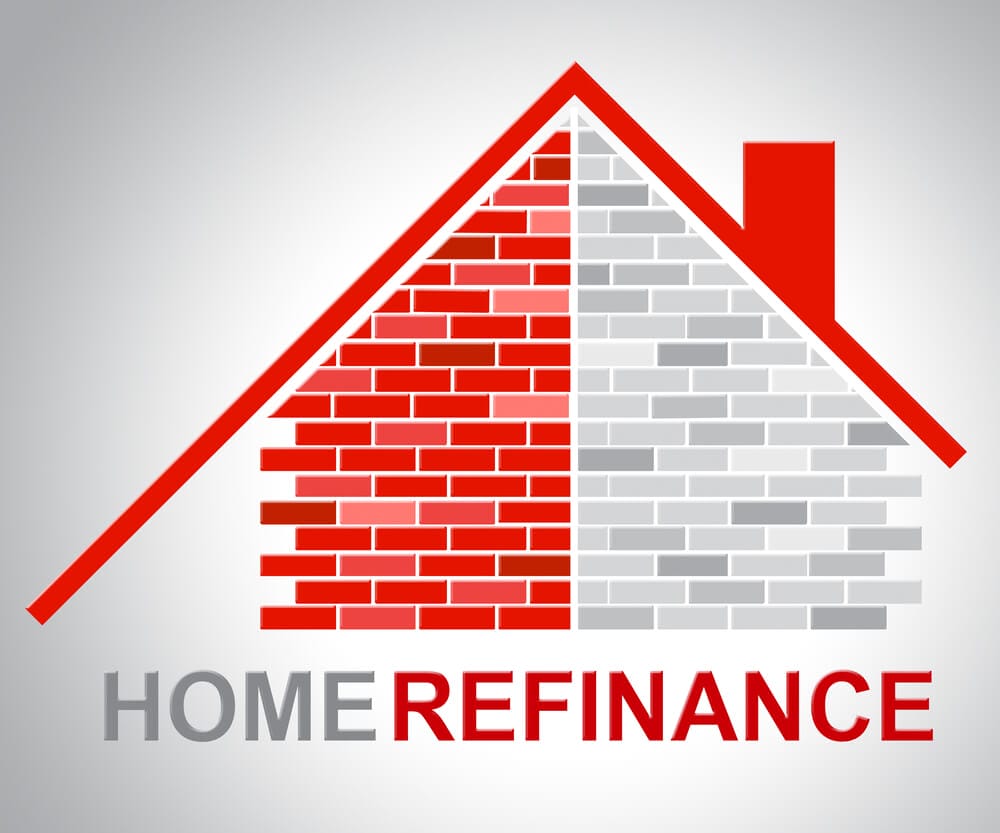Most mortgage programs today require some sort of a down payment. Outside of the VA and USDA home mortgage loans buyers can anticipate a down payment in addition to the funds needed for closing costs. This down payment represents the initial equity the buyers have in the transaction. As well, lenders require equity when refinancing an existing mortgage.
For example, a homeowner has a conventional mortgage and wants to refinance. Most home refinance programs today require the loan amount to be at or below 90% of the current market value of the property. If the value isn’t there, the borrower is faced with a choice of either paying down the loan to meet the 90% threshold or skipping the refinance option altogether. But that doesn’t necessarily need to be the answer. There are ways to refinance when the loan amount exceeds the current market value of the property.

Home Refinance Programs: HARP
The Home Affordable Refinance Program, or HARP, was first introduced in 2009 that allows homeowners to refinance an existing mortgage even though the loan balance is greater than the current value. The initial HARP rollout limited the value to 125% of the property value and while the program helped homeowners refinance it still left millions out in the cold as they owed much more than the 125% limit. Later, HARP was modified to address this issue as the requirement for an appraisal was eliminated altogether. With HARP, it doesn’t matter if the loan amount is greater than the current value because there is no appraisal.
There are a couple of qualifications that must be met in order to be HARP eligible. First, the loan must be owned by either Fannie Mae or Freddie Mac. You can find out if your loan is owned by either by visiting their websites and lookup your property address. Note that who you send your payments to may not necessarily be the entity that owns your mortgage so you need to check first.
Second, there can be no more than one payment made within the past 12 months more than 30 days past the due date and no such late payments within the previous six.
Loan Modification
A modification isn’t a refinance but it does create the same effect by reducing the interest rate on the loan either temporarily or for the life of the loan. A government-sponsored program called the Home Affordable Modification Program, or HAMP, provides a lender with the option of modifying the terms of your note without
refinancing.
Your lender will review your current financials including income and assets to determine whether or not you’re eligible for a modification and if so a trial period may be introduced. For example, a lender adjust the interest rate on your loan to where it more comfortably fits with your current income and after making timely payments for a three month period the lender could then consider making a permanent adjustment to your note.
The lender’s options include adjusting your interest rate, extending your loan term to lower the monthly payments or forgive part of your loan. Even though HAMP is a government-sponsored program a HAMP approval isn’t automatic, it’s still up to the lender to decide whether or not to approve a HAMP application. Because this program is a loan modification and not a refinance, value isn’t a consideration. Affordability is. And like the HARP program the loan must be owned by Fannie Mae or Freddie Mac.

Government Streamlines
There are three government-backed mortgage loan programs, VA, FHA and USDA and all have provisions which allow borrowers to refinance even though they may owe more than the property is worth. With VA loans, the program is called the Interest Rate Reduction Refinance Loan, or IRRRL. Lenders more commonly refer to this loan as the VA Streamline. FHA and USDA also offer streamline options allowing borrowers to refinance with less paperwork.
The VA streamline is a “VA to VA” loan meaning you can streamline an existing VA loan into a new one. The VA streamline eliminates much of the documentation required for a typical loan application. The loan does not require any income or employment information nor are bank statements required. There is no minimum credit score needed and there is no need for an appraisal. This last feature waiving the appraisal also in effect allows borrowers with an existing VA loan to refinance even though they’re underwater.
The FHA program, also an FHA to FHA refinance, also requires less documentation compared to the initial FHA approval and the value used for the FHA streamline is the original purchase price of the property regardless of what the home may be worth today. There is no new appraisal required and therefore no loan-to-value considerations.
The USDA home loan also has a streamline feature and current value isn’t an issue. As long as the property is the borrower’s primary residence, the existing loan is USDA guaranteed and there are no payments made within the past 12 months more than 30 days past the due date, the loan is USDA streamline eligible.
Lenders offer these programs to help borrowers keep their homes and make their payments more affordable. It’s much more beneficial for a lender to figure out ways to refinance an existing mortgage regardless of current value if it means the borrowers can more easily afford the monthly payments, keeping them in their homes. If you or someone you know wants to refinance but doesn’t think they can because of the perceived value of their property there might very well be able to refinance after all using one of these programs.


